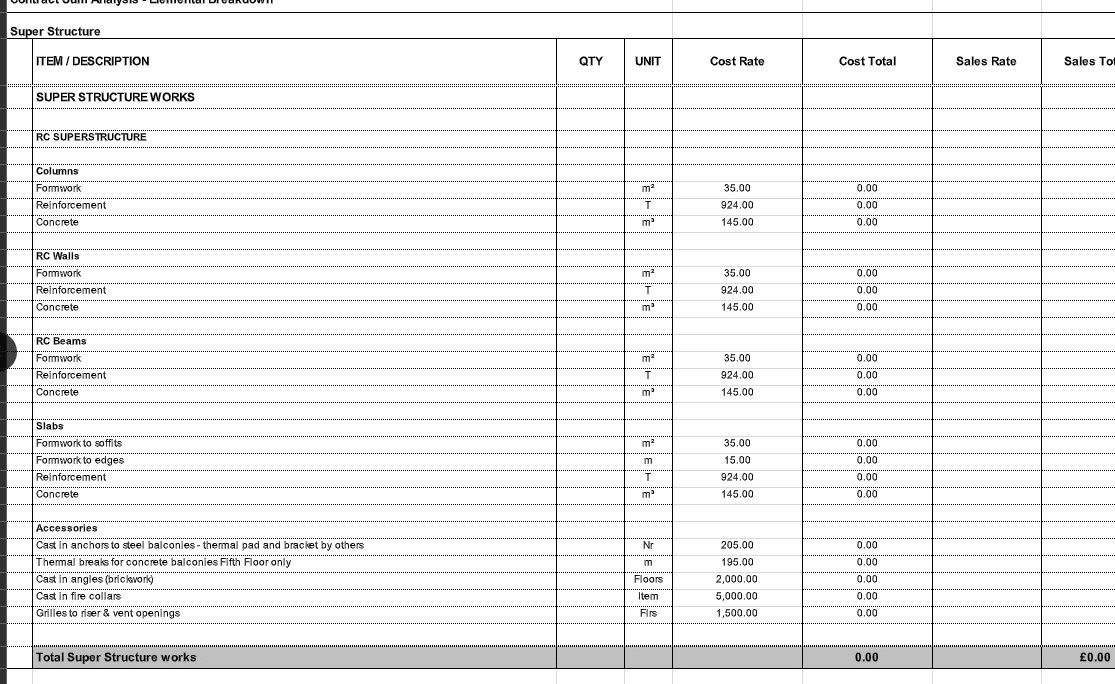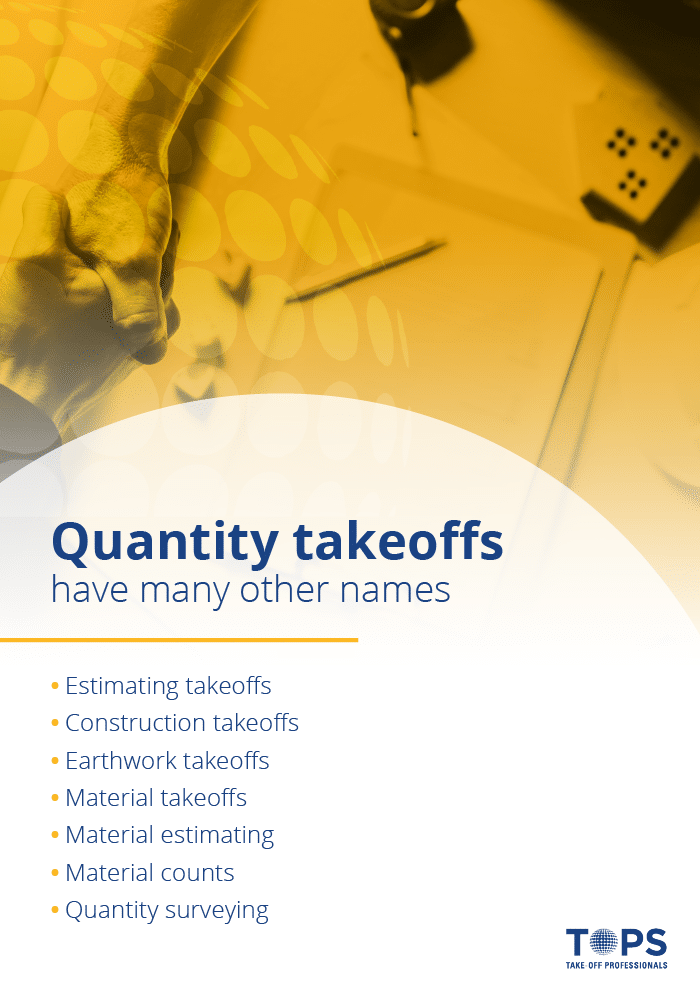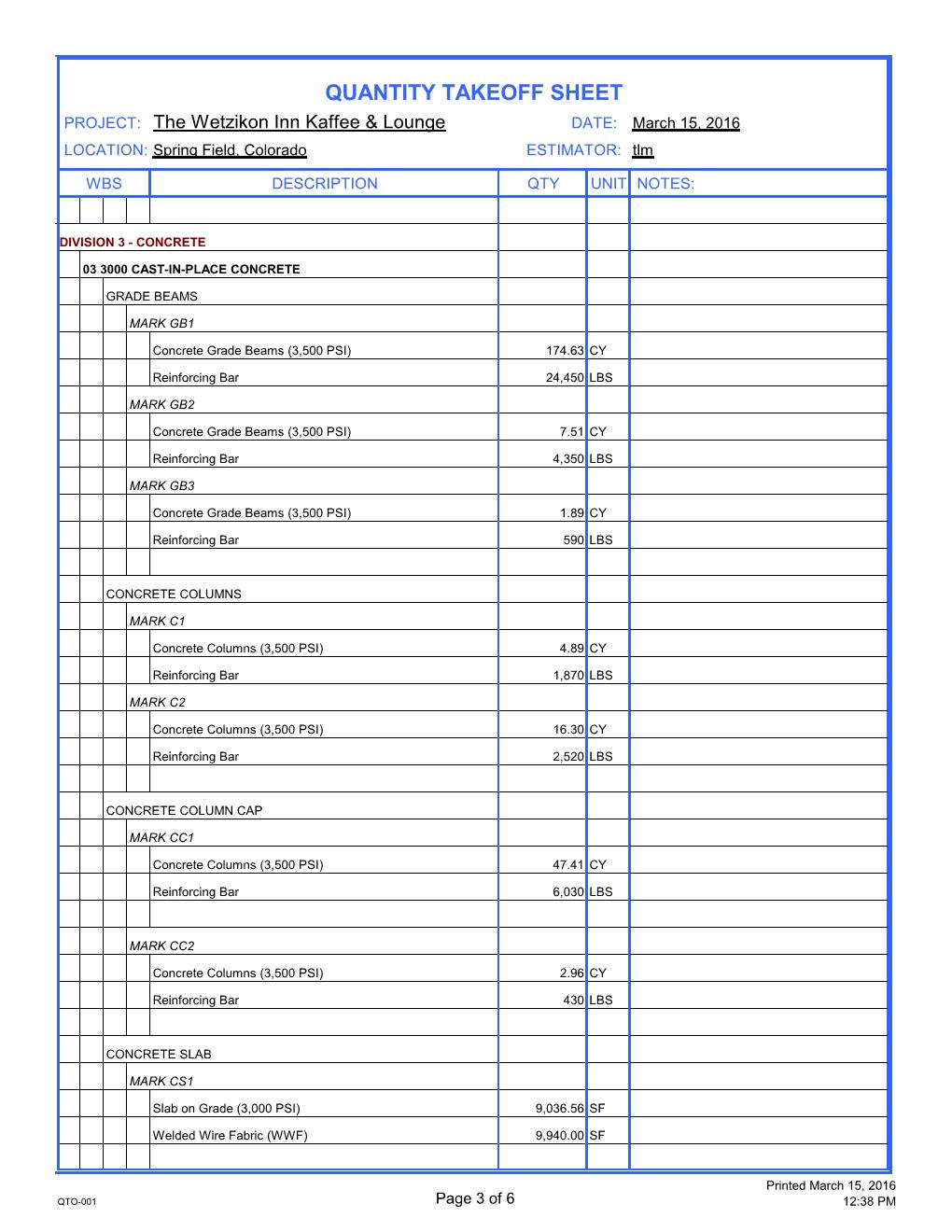

Modifications (during contract fulfillment). Agreement form (for singing very important and particular clauses). Additional (during bidding or negotiation). Supplementary (unique to a given project). Special (for a specialty area of the project). Contract documents are usually arranged according to the following sequence: General (for any project). Responsibilities and procedures (liability, resources provided, time schedule, payment conditions, changes procedures, etc). Prices for the contractor's contribution. Output of the contract (specifications, results to be achieved).

In a logical order, these documents refer to the following subjects: 21Ģ Input from the client (task description). The material quantity takeoff is extremely important for cost estimating because it often establishes the quantity and unit of measure for the costs of labor and contractor s equipment Contract documents The contract is defined by the contract documents, which are developed from the tender documents. The estimator must, also, add an appropriate percentage for waste for those items where waste is likely to occur during construction. A wellorganized checklist of work will help reduce the chances of omitting an item. Each estimator must develop a system of quantity takeoff that ensures that a quantity is not omitted or calculated twice. The estimator must review each sheet of the drawings, calculate the quantity of material and record the amount and unit of measure. 2.1 Importance of Quantity Takeoff and Required Documents The quantity of material in a project can be accurately determined from the drawings. The estimate contingencies for programming purposes reflect the estimate confidence. An accurate and complete estimate establishes accountability and credibility of the cost engineer, therefore, providing greater confidence in the cost estimate. Accuracy and completeness are critical factors in all cost estimates. Use of appropriate automation tools is highly recommended. It must be as accurate as possible and should be based on all available engineering and design data. “ + “ walls / cross walls – Wall breath measurement should be deducted to the total length of centreline.1 CHAPTER 2 QUANTITY TAKEOFF The quantity takeoff is an important part of the cost estimate. “ T “ Junction – Half (1/2) breadth wall measurement should be deducted for a T junction. “ L “ Junction – There is no need to deduct from total centreline length. So there is o need to add or deduct anything to the measurement when takeoff quantity.


But the measurement of blue coloured area will not be included in any instance such as when calculate the measurement of yellow coloured area or when calculate the silver coloured area. Here the green coloured area will be calculated twice when takeoff quantity. So the green coloured area should be deducted once from the measurement when takeoff quantity. Here, the green coloured area will be calculated twice when takeoff quantity. But the calculations should be carefully noticed in junctions or cross walls such as L, T or +. Here, the center line is multiplied by breadth and the height to take out the necessary quantity (center line X breadth of wall X height). The center line act as “length” for calculation of an estimate by this method. But the method is more suitable if the offsets of the building are symmetrical. This method is easy or quick as to calculate even from work site. This is another method of taking out quantities for construction estimation. Length of long wall measurement decreases while length of short wall measurement increases, when notice the measurements from foundation to super structure.Ĭalculate the quantity of excavation for the given plan using long wall – short wall method? Short wall length in-to-in = c/c length – 1/2 breadth on one side – 1/2 breadth on the other side Long wall (out-to-out) = c/c length + 1/2 breadth on one side + 1/2 breadth on the other side


 0 kommentar(er)
0 kommentar(er)
